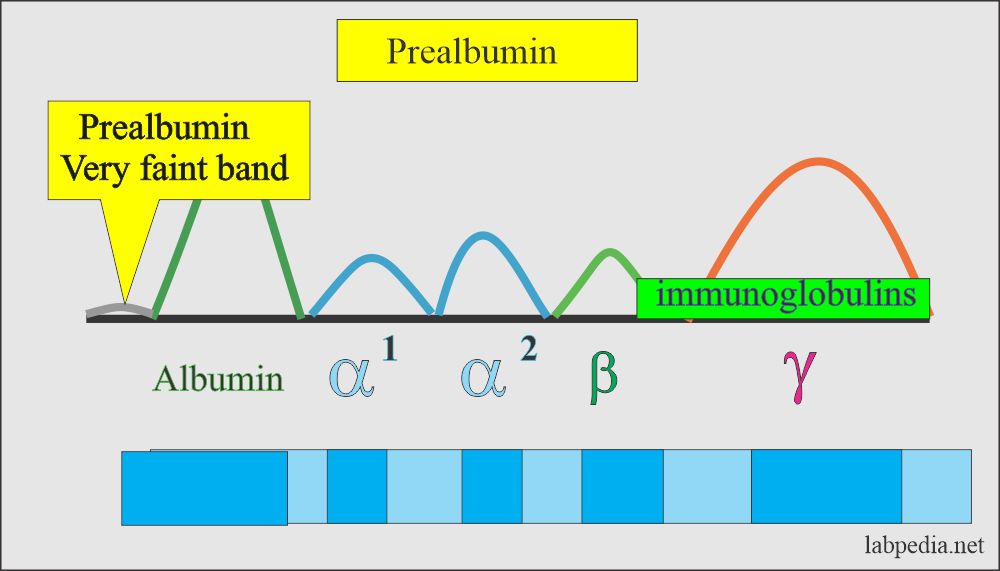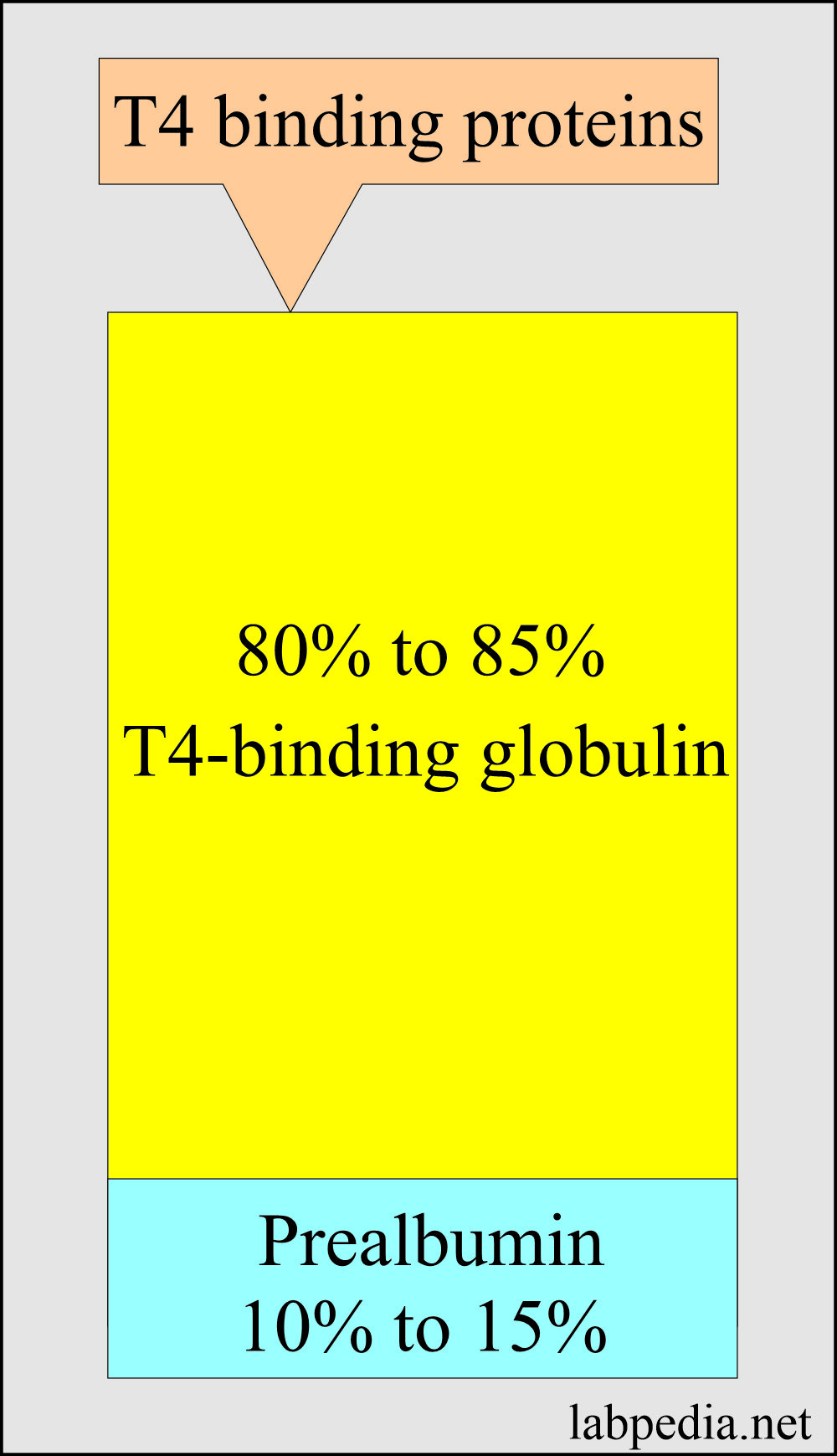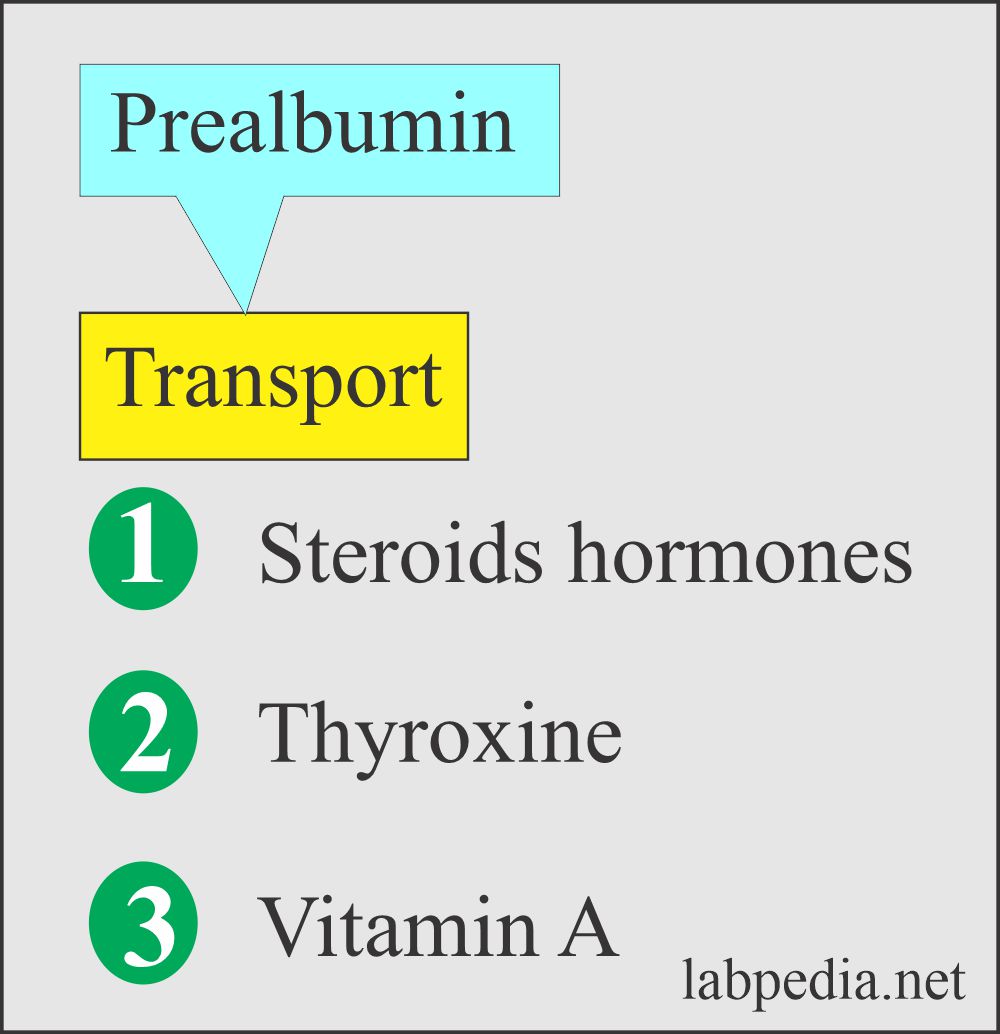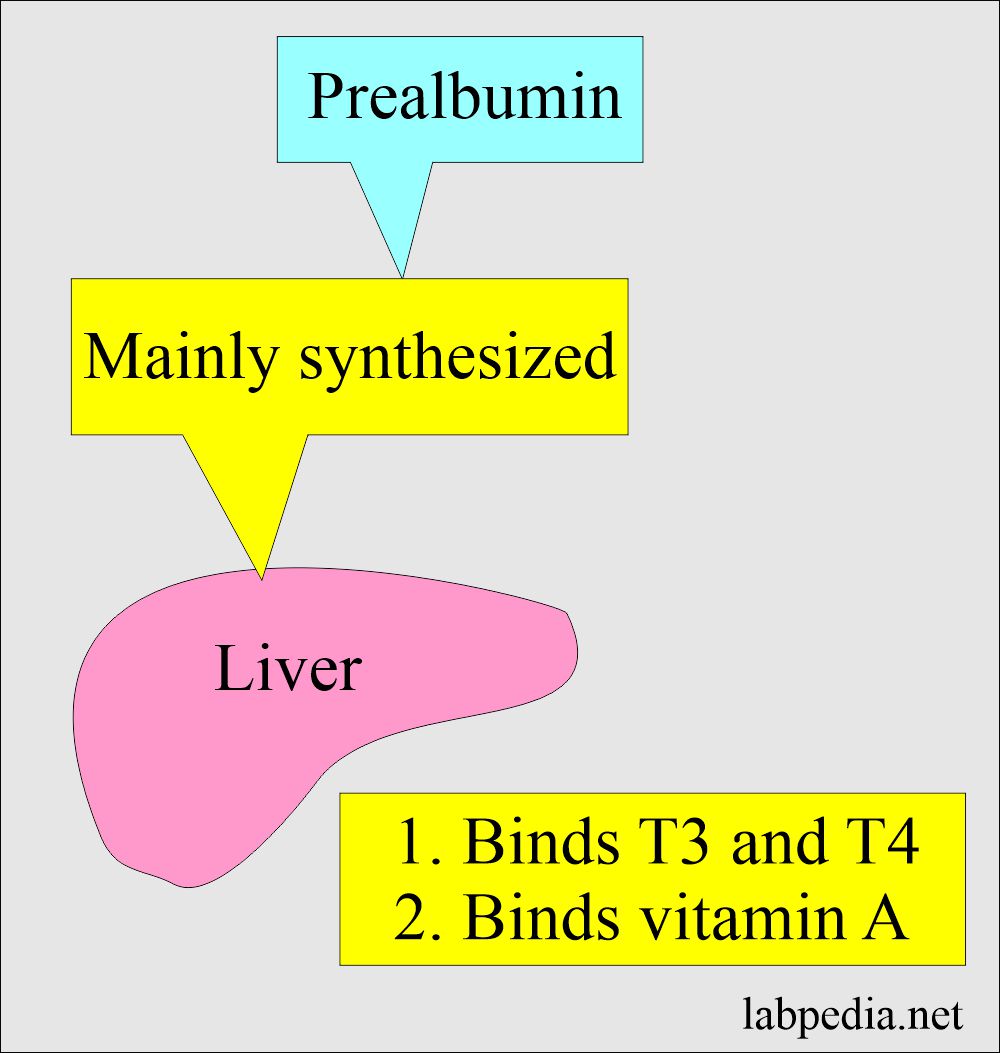Prealbumin (PAB)
Prealbumin
What sample is needed for Prealbumin?
- This is done on the patient’s fresh serum.
- Twenty-four hours of the urine sample can also be tested.
What are the indications for Prealbumin?
- It is used to assess nutritional status.
- As workup in patients with kidney diseases.
- Advised in subclinical deficit and assessing the response to restorative therapy.
What are the precautions for Prealbumin estimation?
- In the case of inflammation, the result is not representative of the disease.
- Drugs like anabolic steroids, androgens, and prednisolone increase the level.
- Drugs like estrogens and oral contraceptives decrease the level.
What is the pathophysiology of Prealbumin?
- Prealbumin is synthesized mainly in the liver.
- This was also called transthyretin because of its binding with thyroid hormones.
- This is the fastest-moving protein on serum electrophoresis.
- This has the same concentration in the serum and CSF. Due to the low level of other proteins in the CSF, prealbumin is the major protein in the CSF.
- This can be used to differentiate CSF leakage from nasal secretions in cases of fractures of the skull’s base.
- A very faint band is normally not seen on traditional electrophoresis.
- It can cross the blood-brain barrier and actively secrete into the cerebrospinal fluid and choroid plexus.
What is the function of Prealbumin as a carrier protein?
- It binds to T3 and T4, so-called Transthyretin or thyroxine-binding prealbumin.
- This is also referred to as thyroxine-binding prealbumin (TBPA).
- It also binds and carries retinol as a retinol-binding protein, which binds Vitamin A.
- This protein-vitamin complex is essential for transporting oil-soluble Vitamin A in the body.
- Zinc is required to synthesize prealbumin; low levels occur in Zinc deficiency.
What are the functions of prealbumin?
- This is also the amyloid precursor protein found in cardiac amyloidosis.
- Its half-life is 48 hours (1.9 days), which makes it more important than Albumin and transferrin.
- Albumin’s half-life is 21 days.
- Prealbumin is a good indicator of any change affecting protein synthesis and catabolism.
- Because of its short half-life (2 days), prealbumin responds quickly to nutritional intake and nutritional restoration.
- It gives the current nutritional status of the body, not the status from 3 weeks ago.
- Prealbumin is important in the nasal secretions to differentiate fluid coming from the skull fracture versus nasal secretion.
- Negative acute-phase protein:
- Prealbumin is a negative acute-phase protein, and serum level decreases in inflammation, malignancy, and protein-losing diseases of the kidneys and intestine.
How will you classify malnutrition based on prealbumin?
| The severity of the malnutrition | Prealbumin level |
| Mild | 10 to 15 mg/dL (100 to 150 mg/L) |
| Moderate | 5 to 10 mg/dL (50 to 100 mg/L) |
| Severe | 0 to 5 mg/dL (0 to 50 mg/L) |
What is the normal level of prealbumin?
Source 2
| Age | Normal range |
| Adults/elders | 15 to 36 mg/dL (150 to 360 mg/L) |
| <5 years | 6 to 21 mg/dL |
| 1 to 5 years | 14 to 30 mg/dL |
| 6 to 9 years | 15 to 33 mg/dL |
| 10 to 13 years | 22 to 36 mg/dL |
| 14 to 19 years | 22 to 45 mg/dL |
| Urine 24 hours sample | 0.017 to 0.047 mg/day |
| CSF | Approximately 2% of the CSF total proteins |
| Critical value | <10.7 mg/dL (indicates severe malnutrition |
Source 4
Prealbumin
- 19 to 38 mg/dL (190 to 380 mg/L) by nephelometry
How will you Interpret nutritional status based on Prealbumin?
- In severe protein deficiency, = Level is 0 to 5 mg/dl.
- In moderate protein deficiency, = Level is 5 to 10 mg/dl.
- In mild protein deficiency, = Level is 10 to 15 mg/dl.
- (Normal value may vary from lab to lab.)
What are the causes of increased levels of prealbumin?
- Chronic Alcoholics.
- Patients with corticosteroid therapy.
- Hodgkin’s lymphoma.
- Kidney diseases.
- Pregnancy.
What are the causes of decreased levels of prealbumin?
- In cases of malnutrition.
- Hypothyroidism
- Liver diseases.
- Inflammatory conditions.
- In cases of trauma like burns.
- In chronic diseases.
- In some digestive diseases.
- In Cancers.
- Salicylate poisoning.
Questions and answers:
Question 1: What is the half-life of prealbumin?
Question 2: What is the level of prealbumin in severe protein deficiency?




